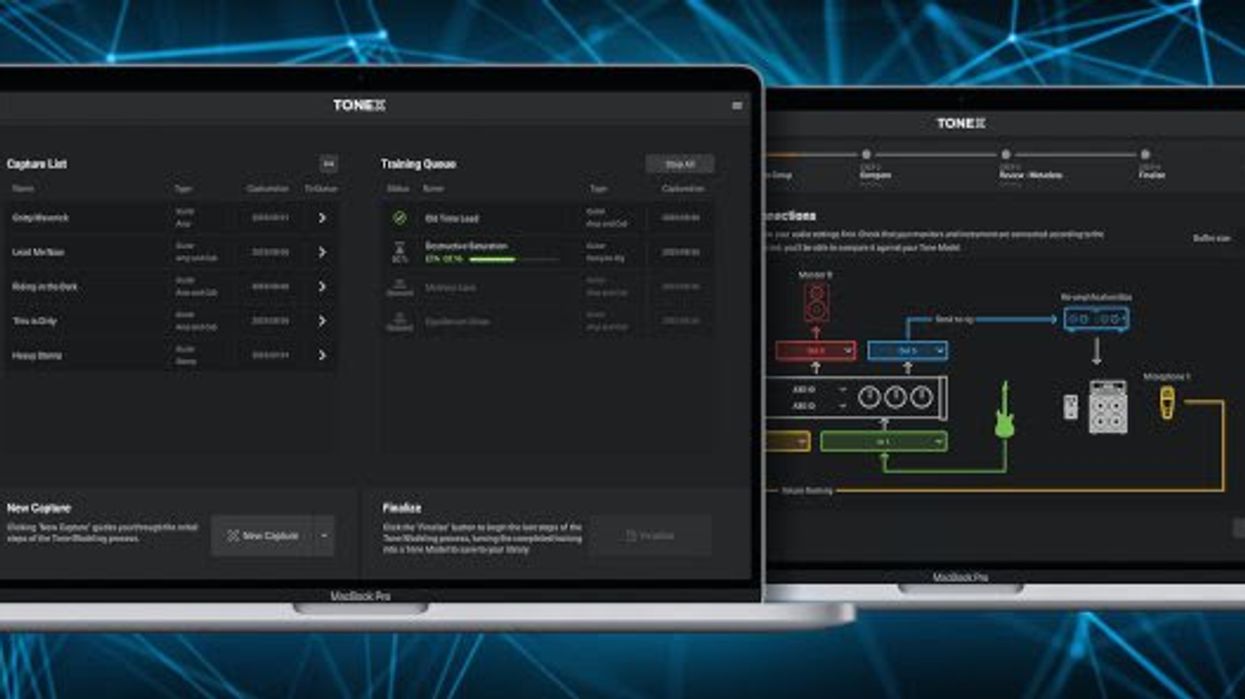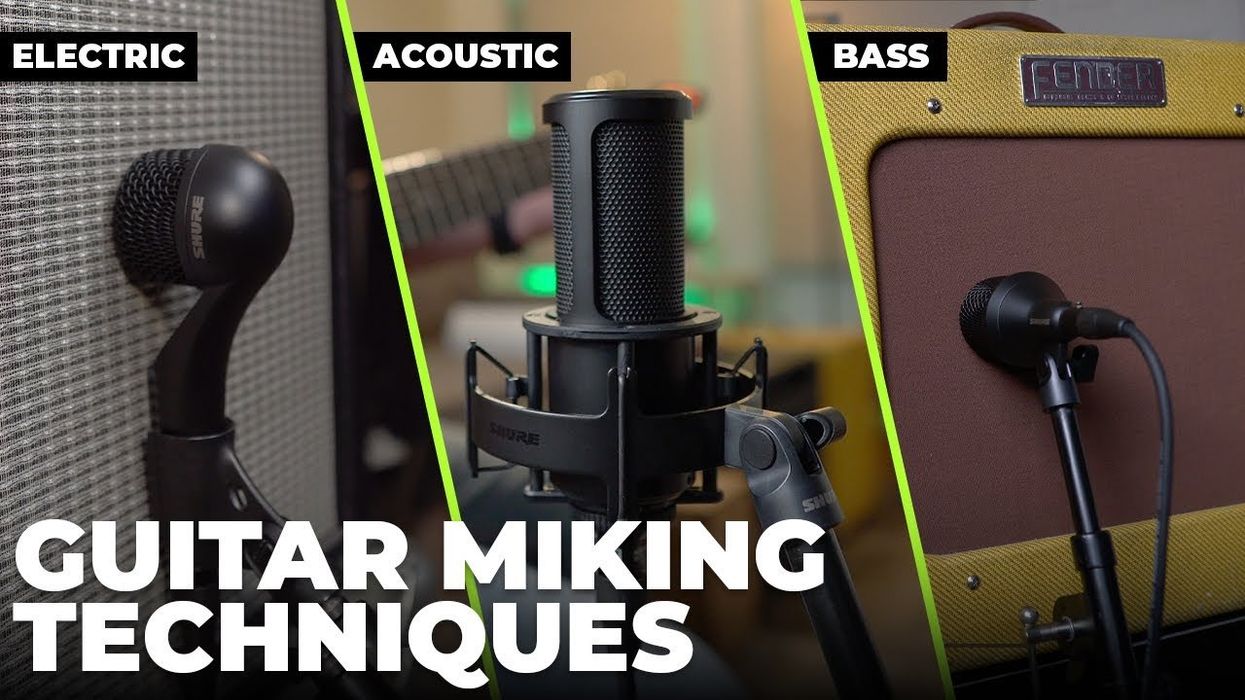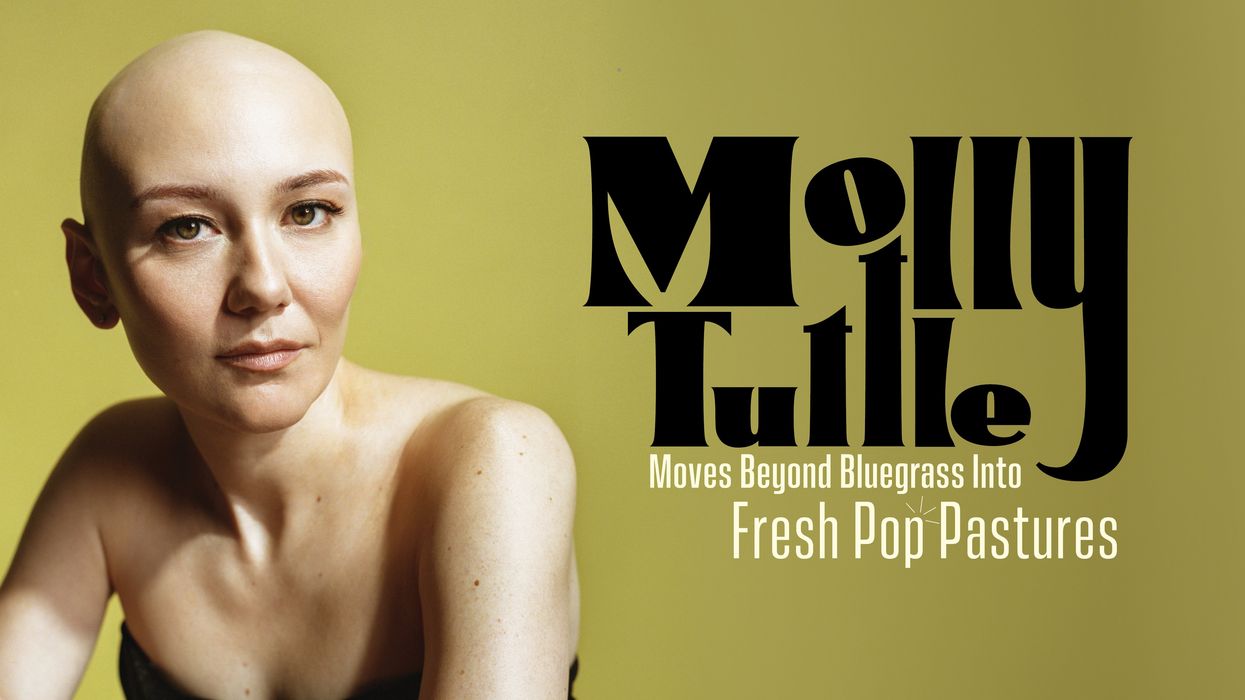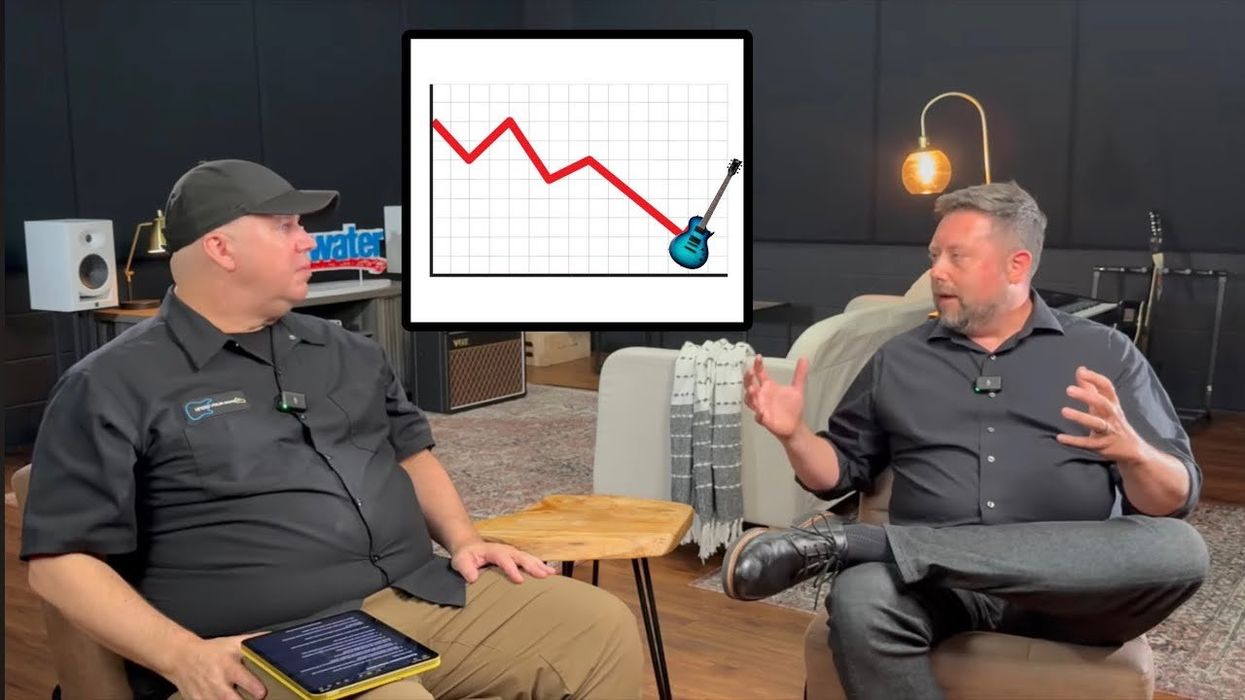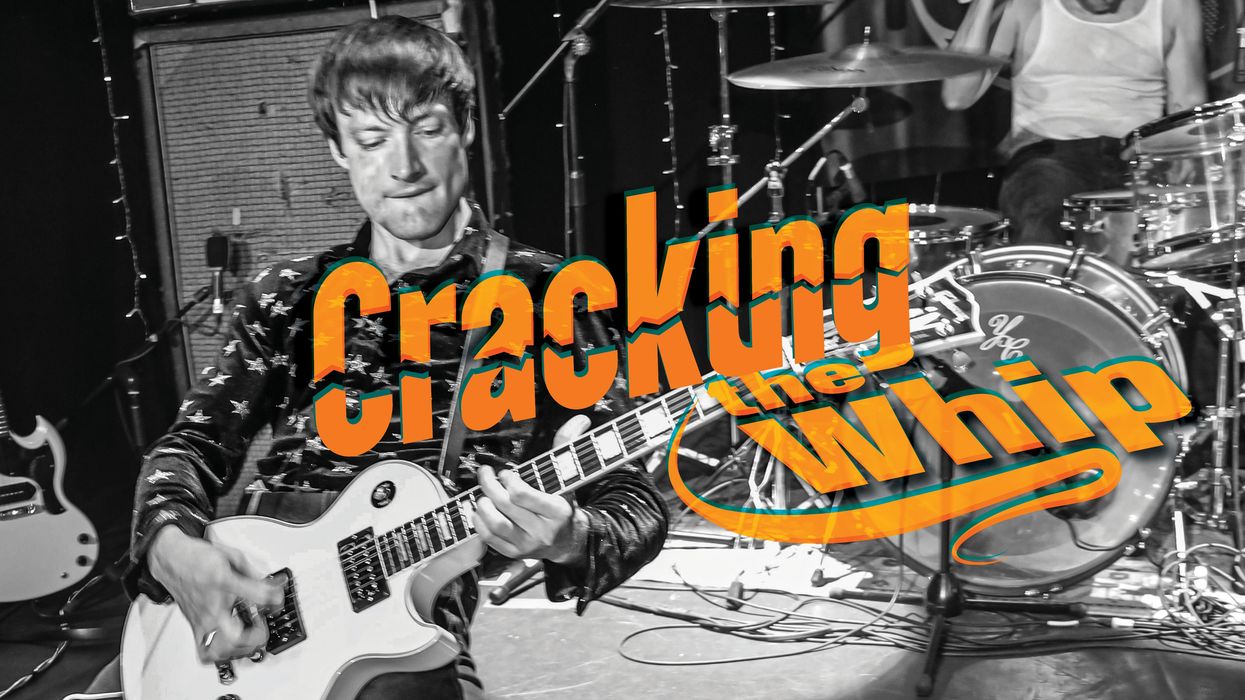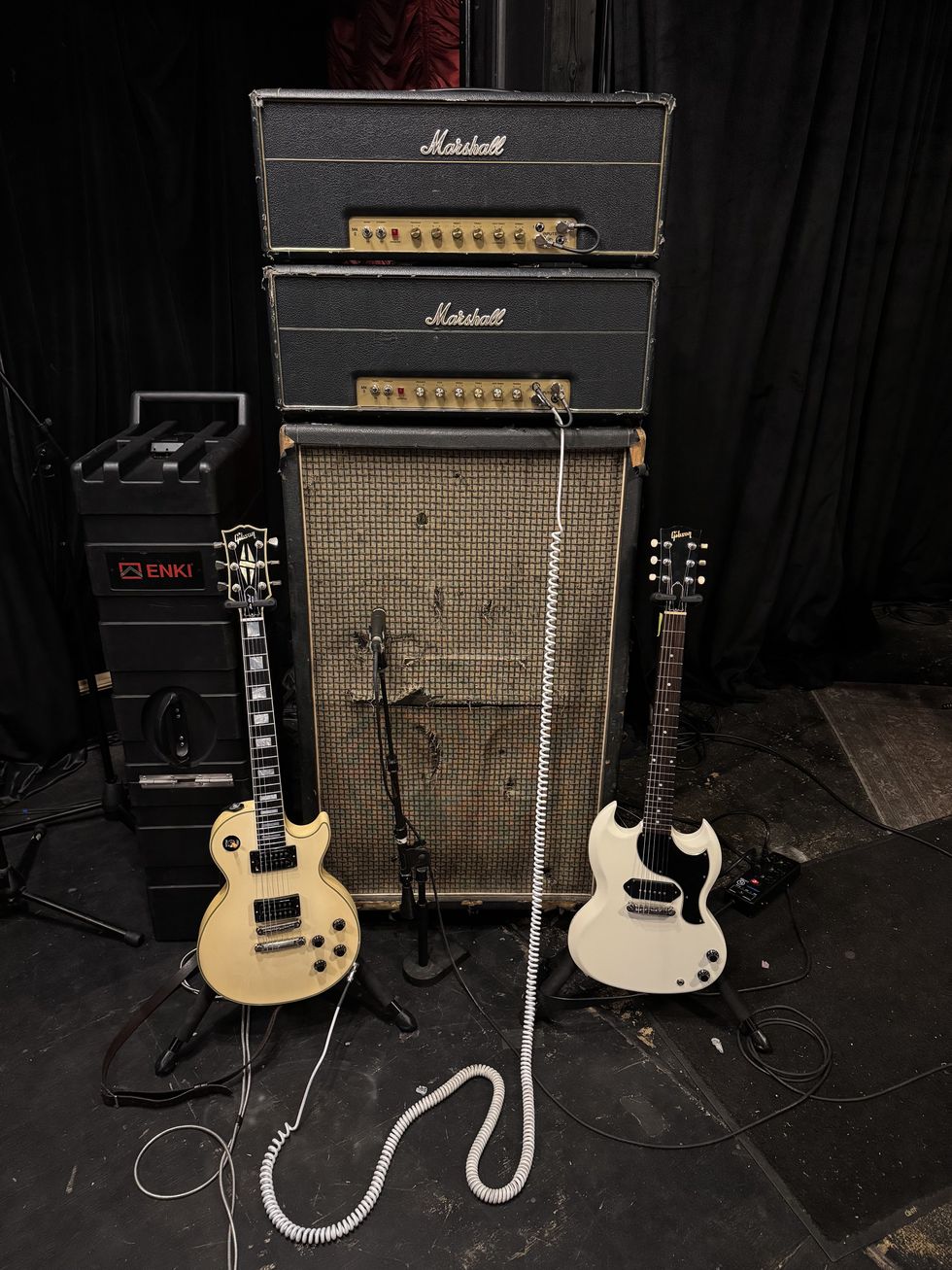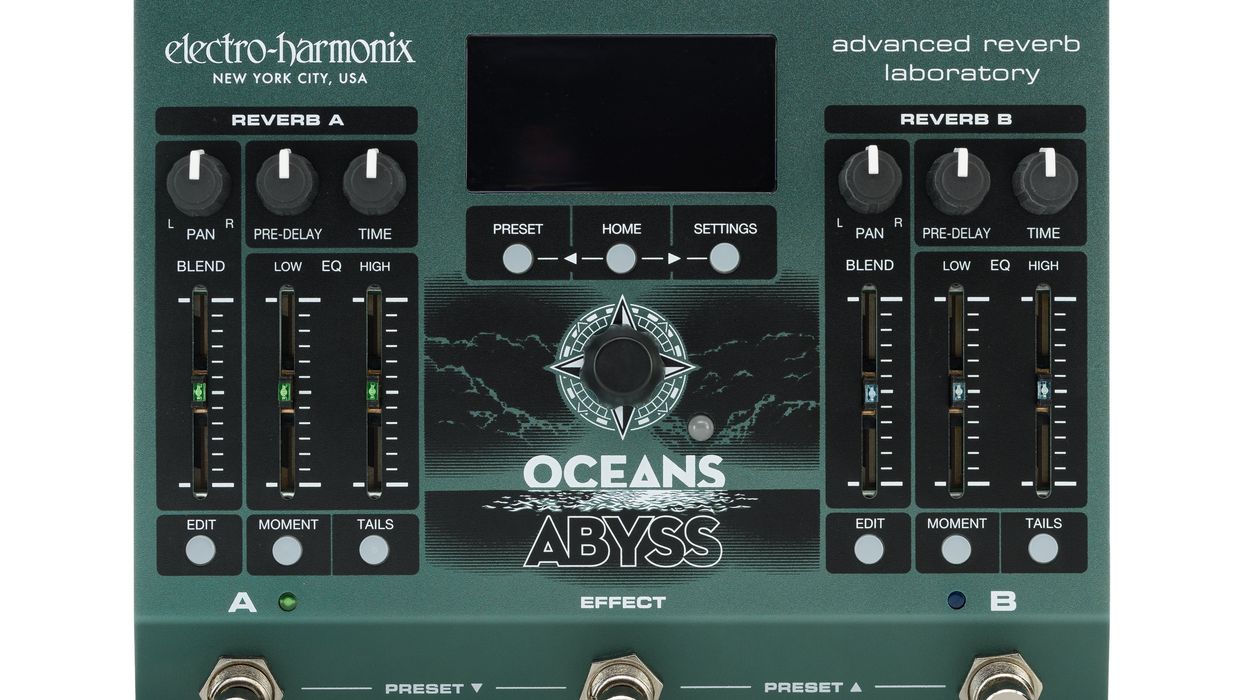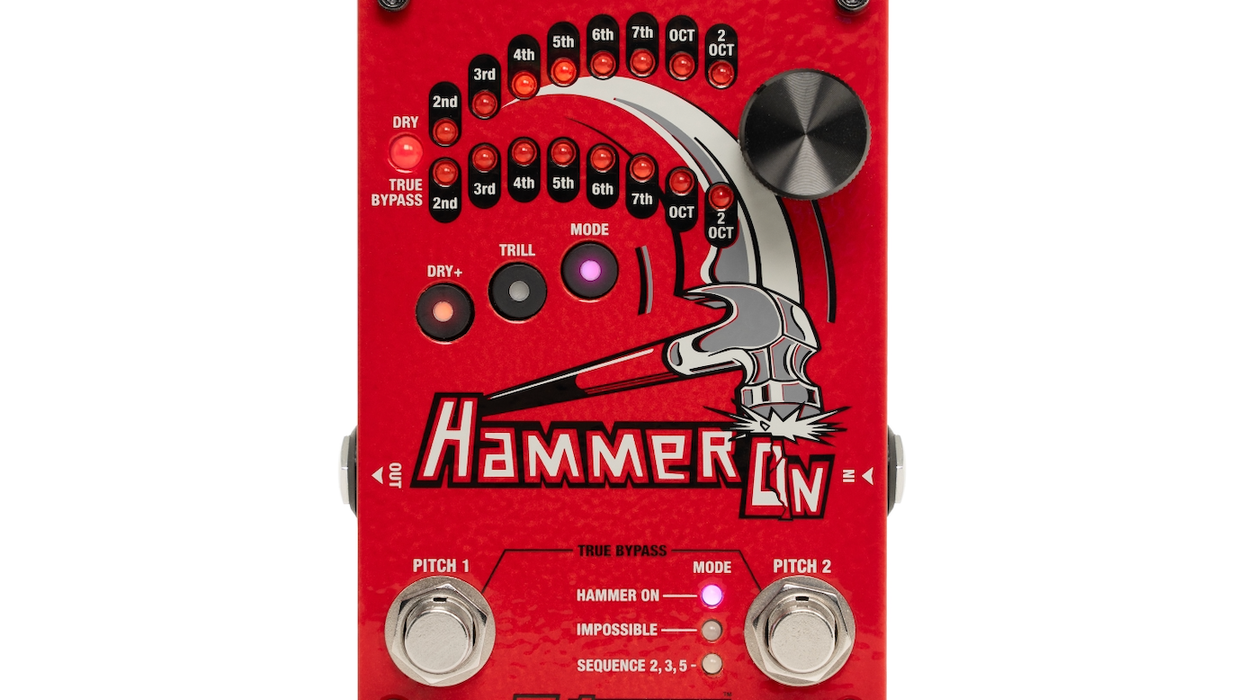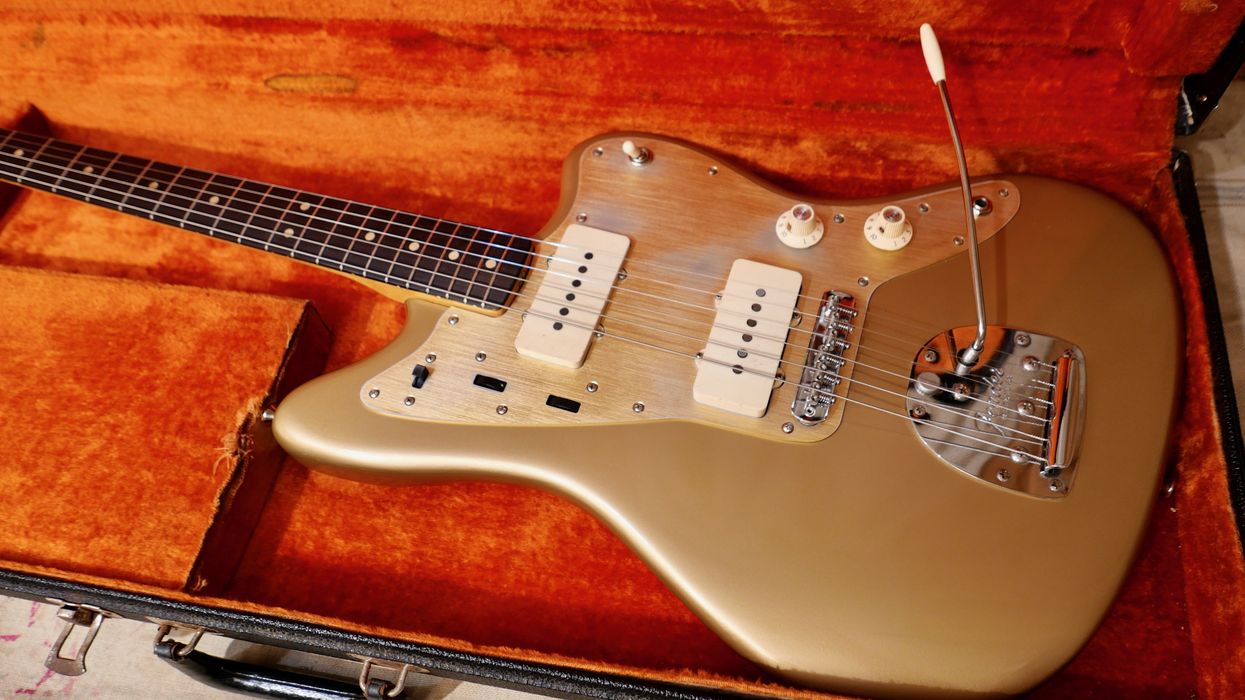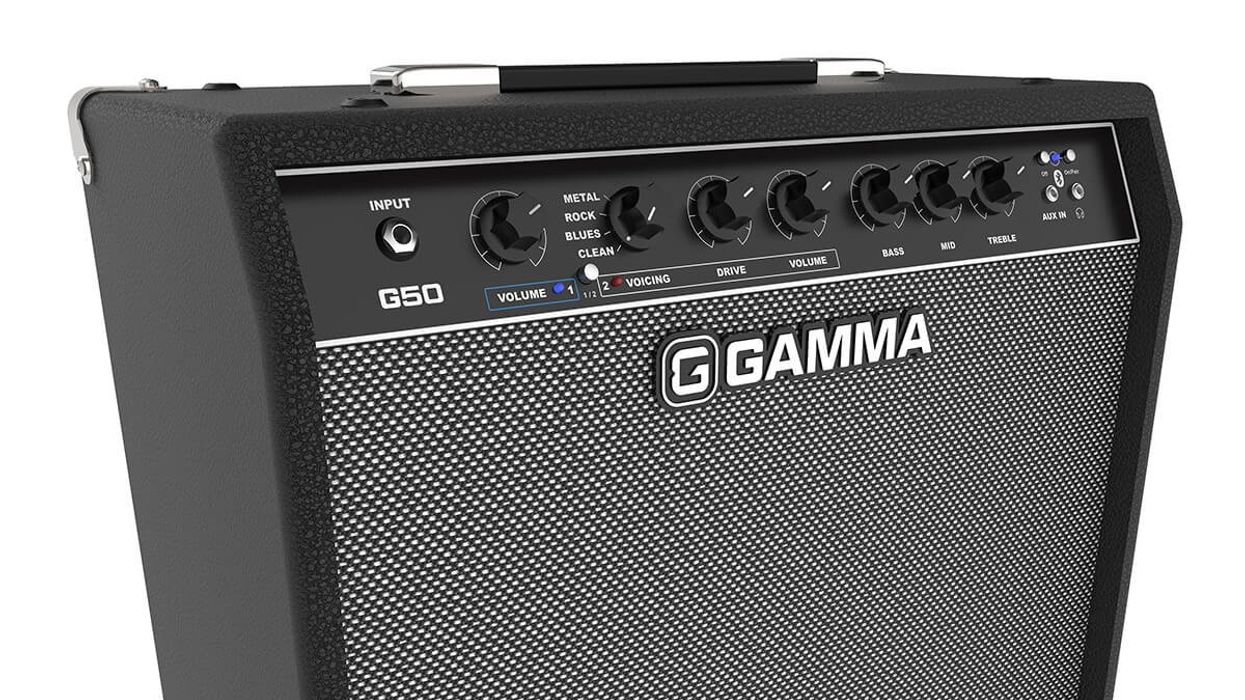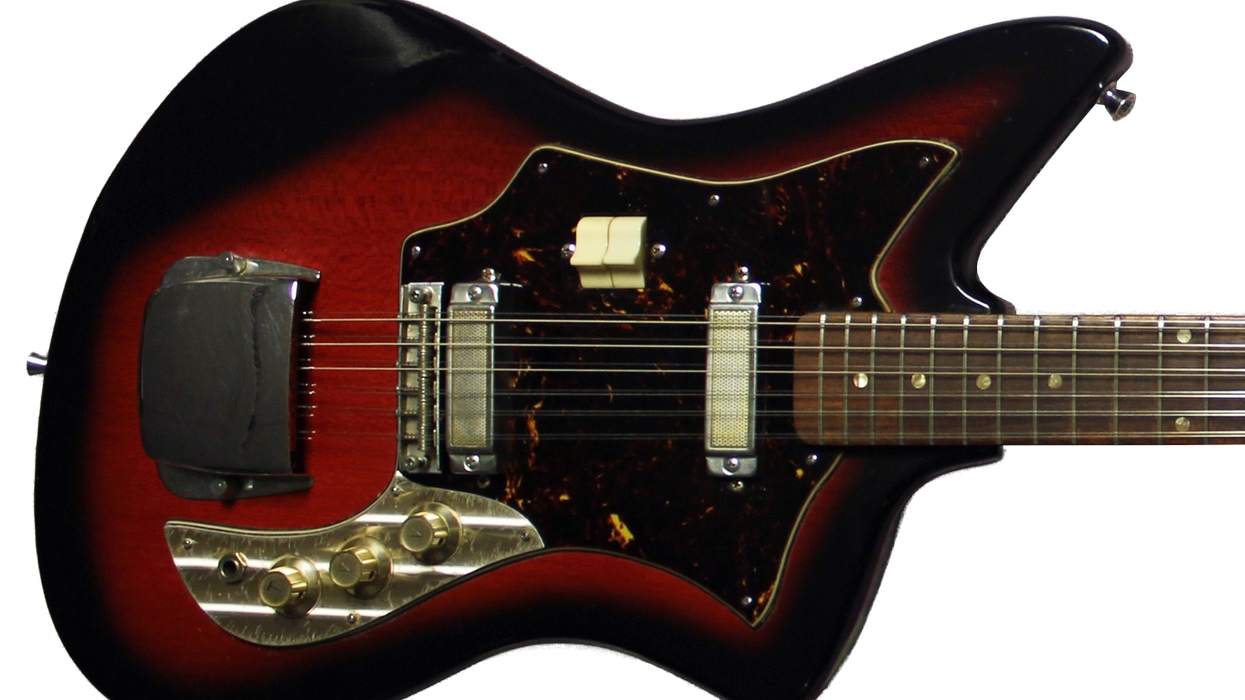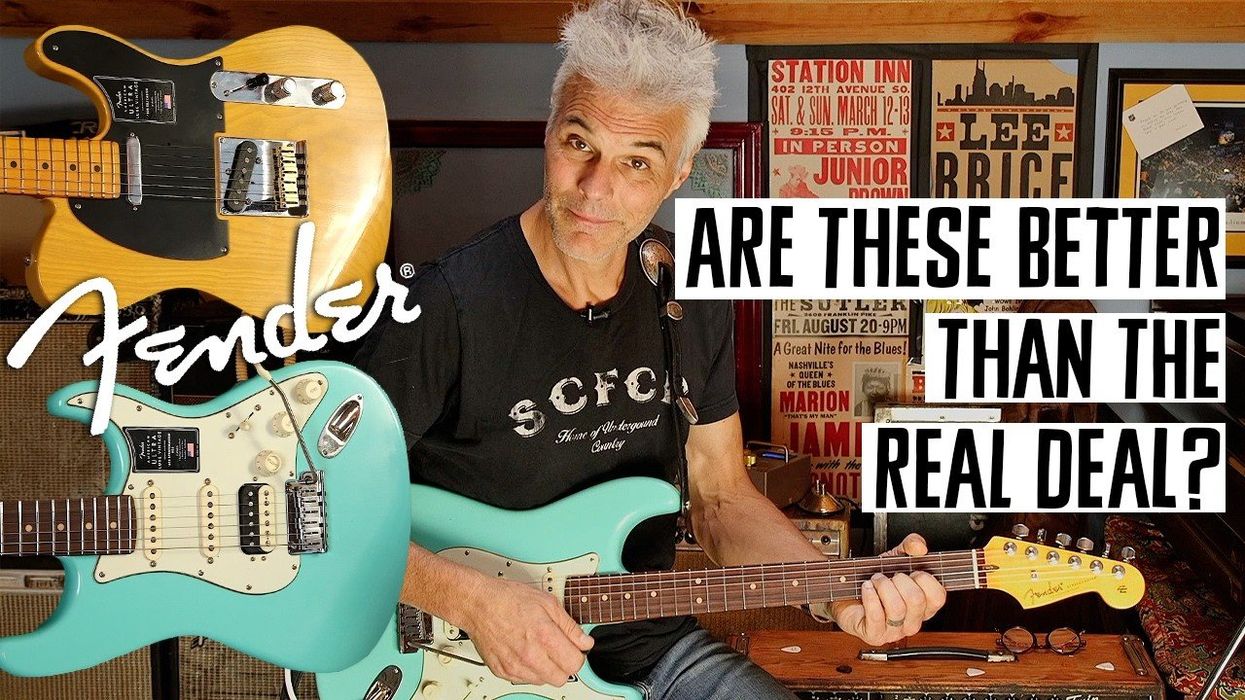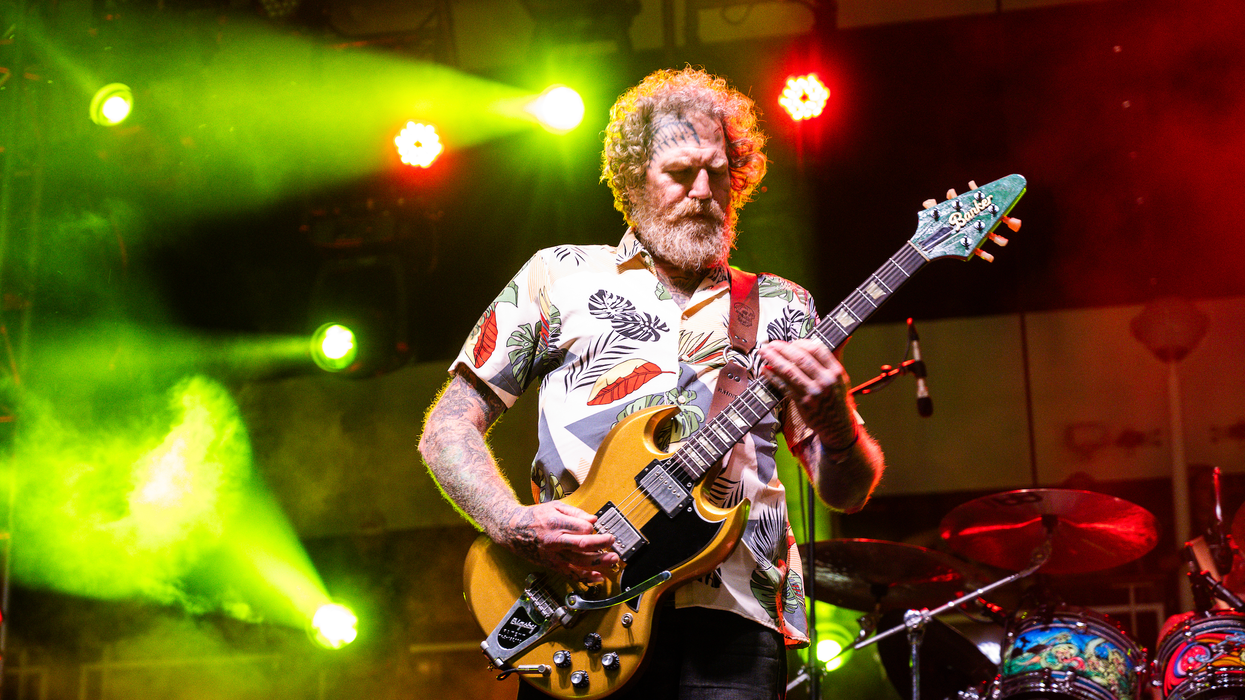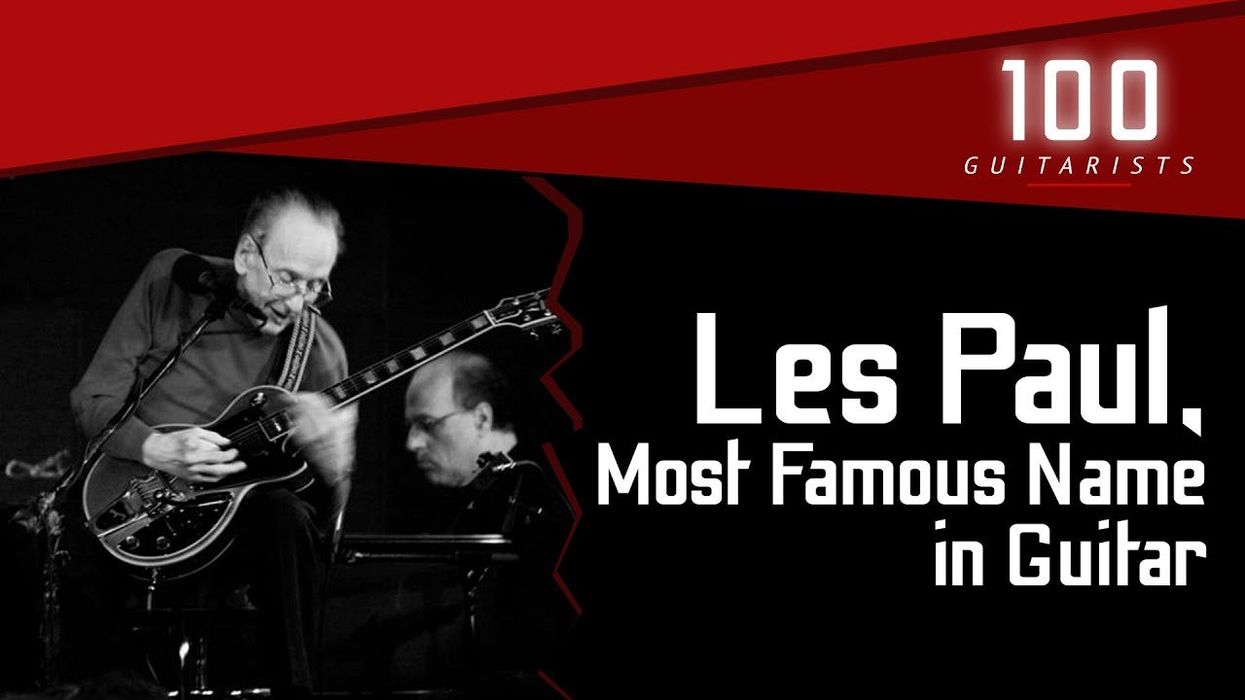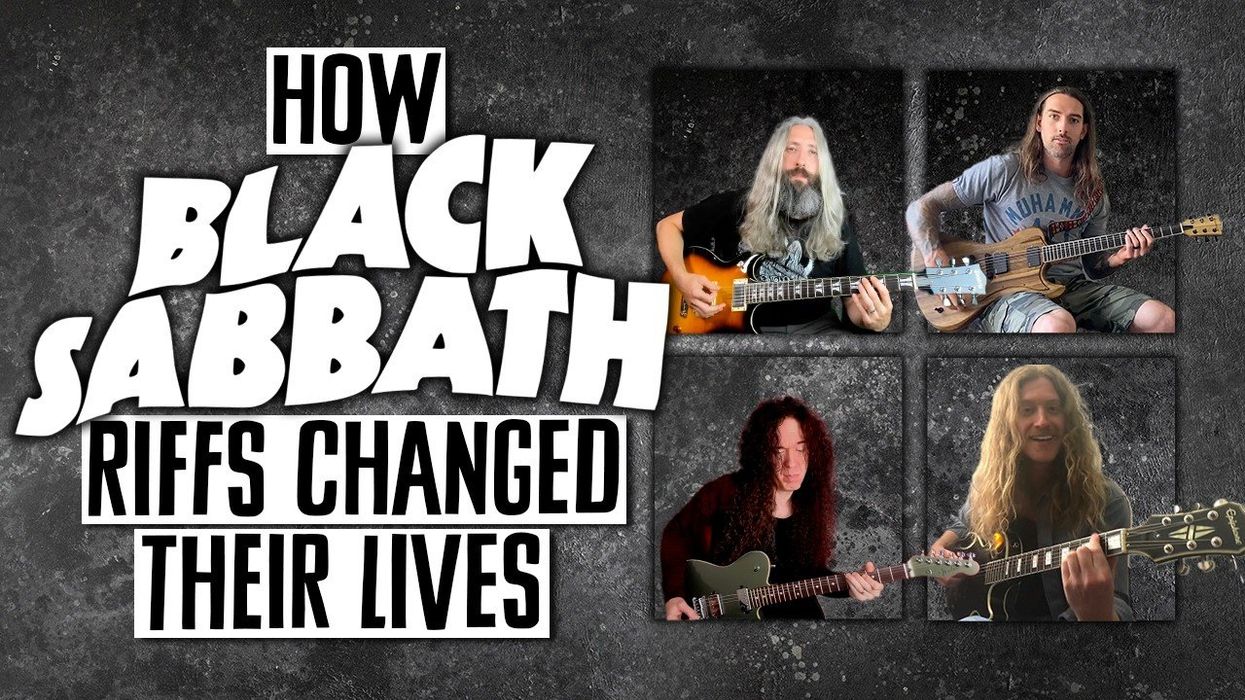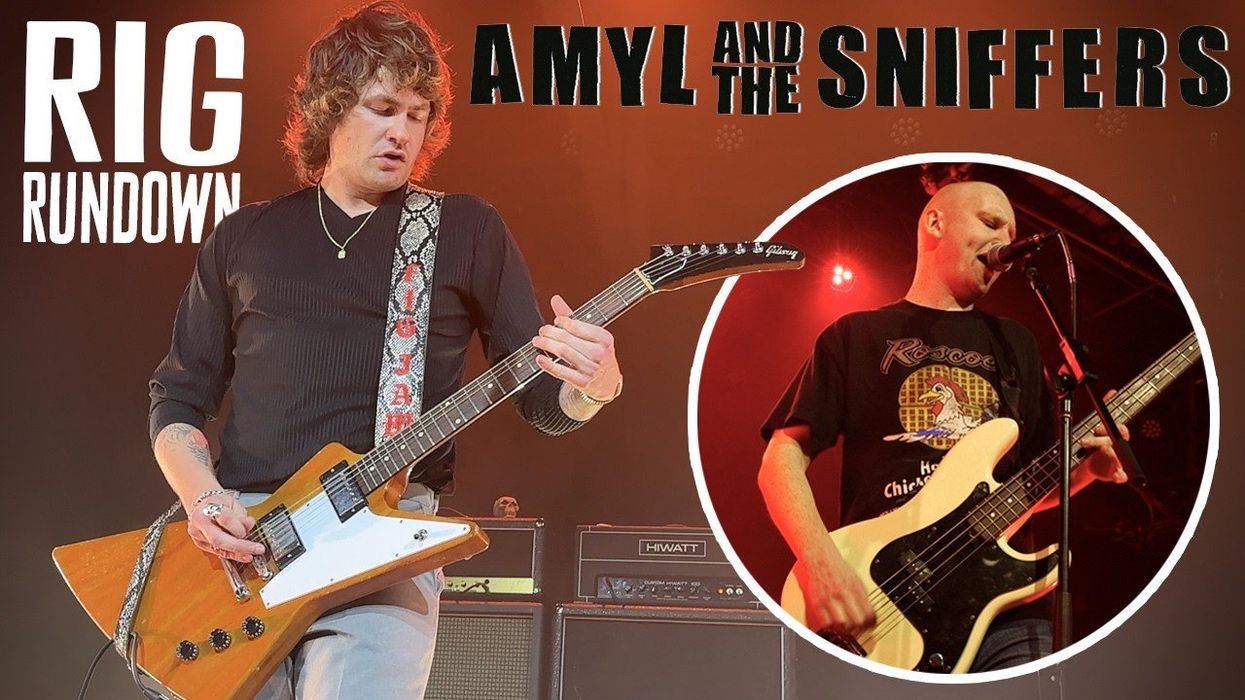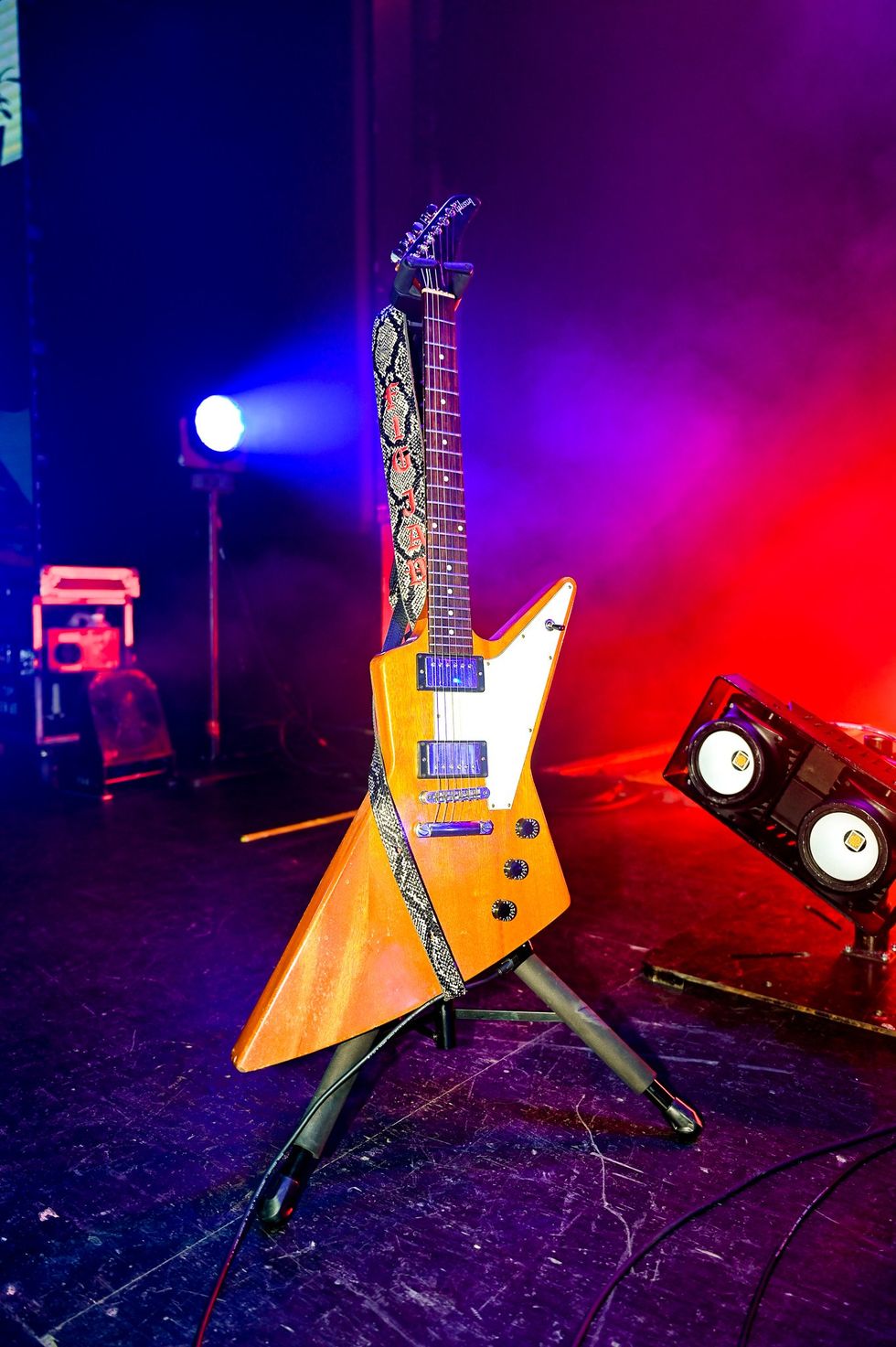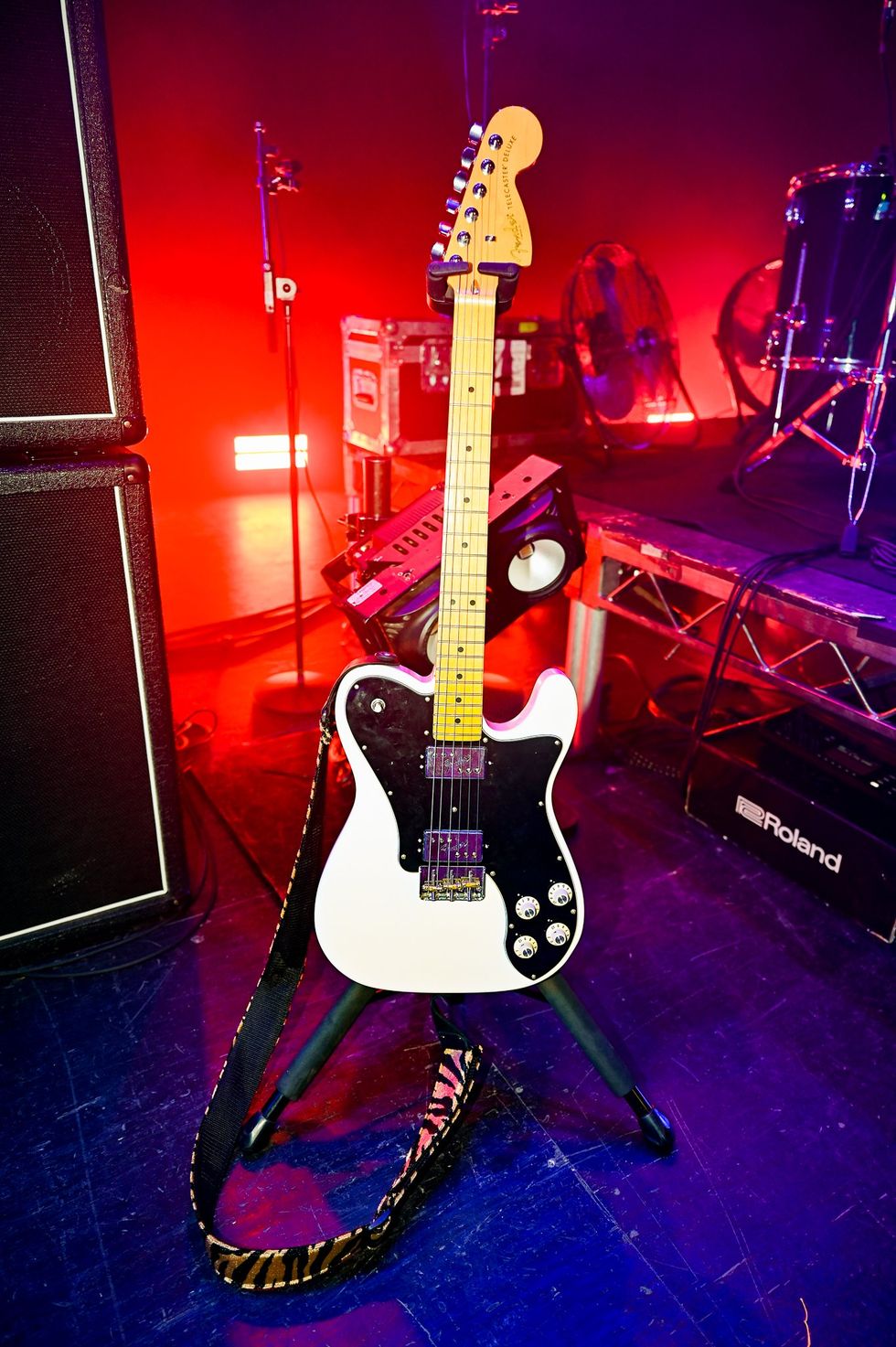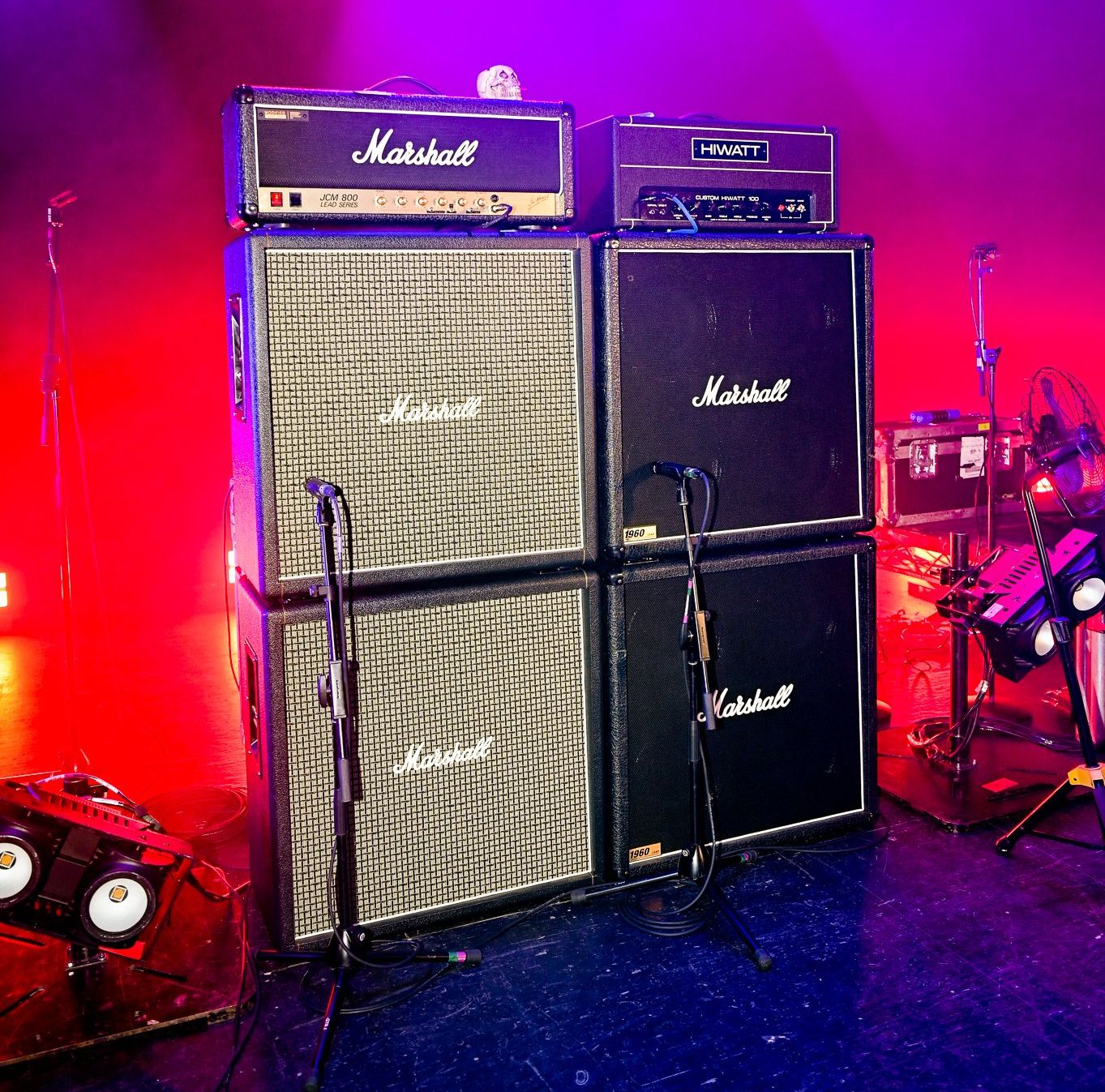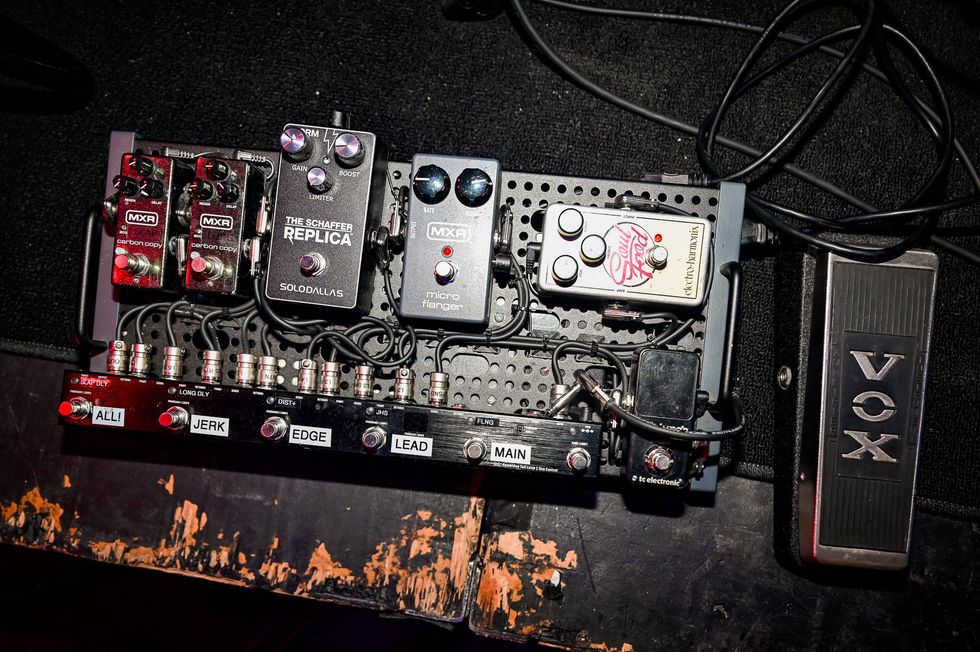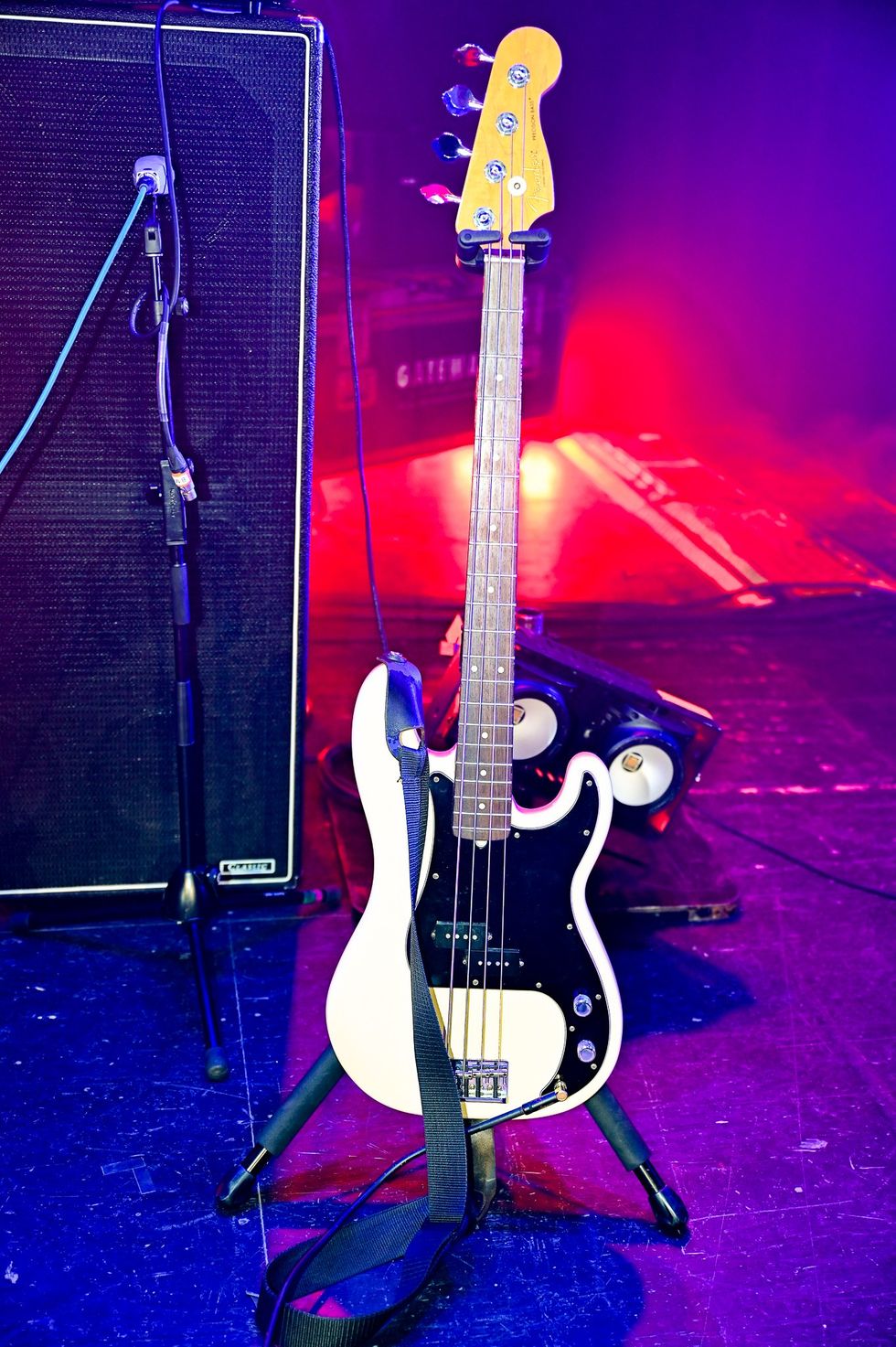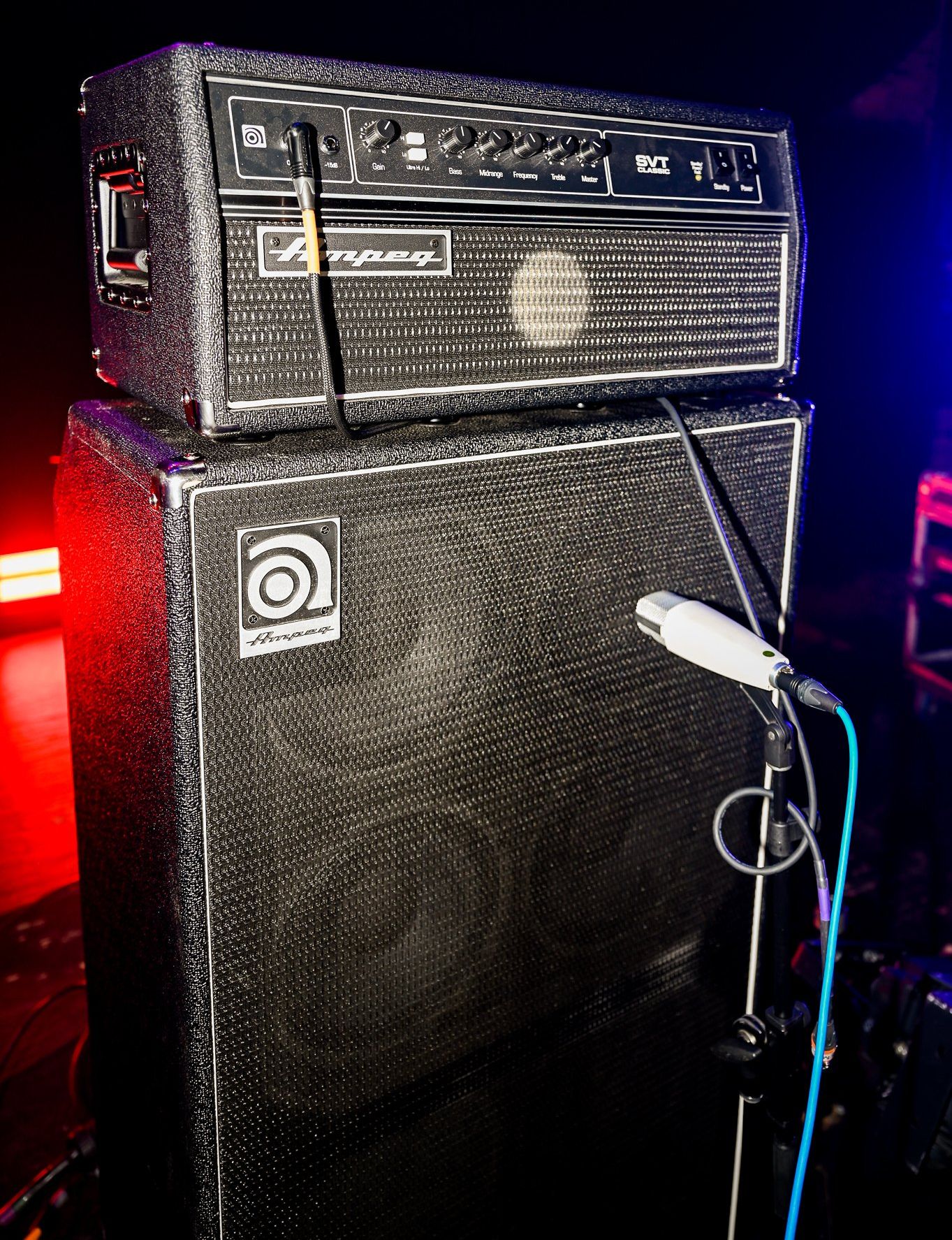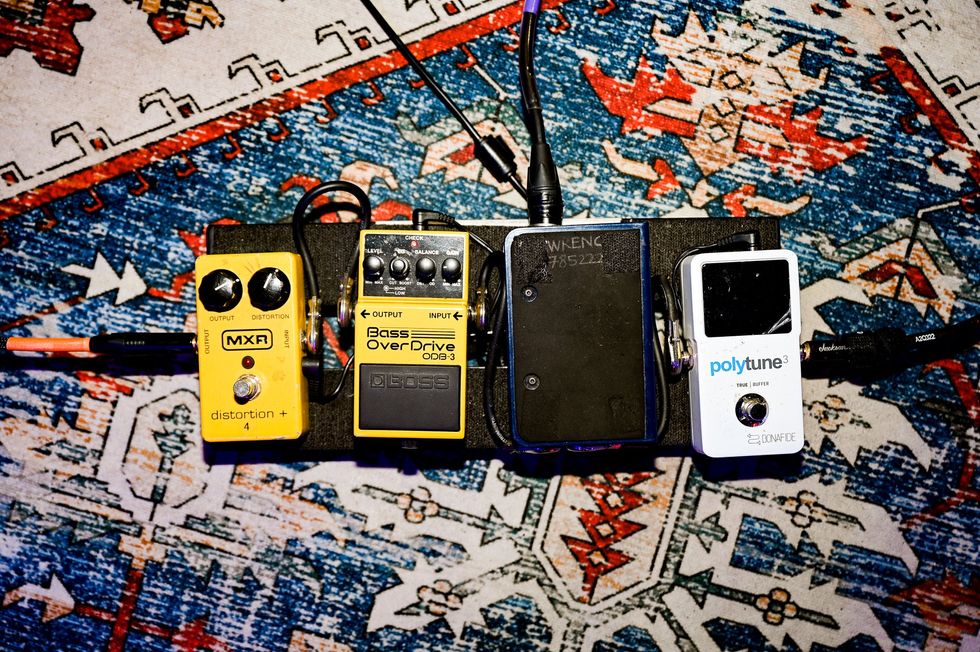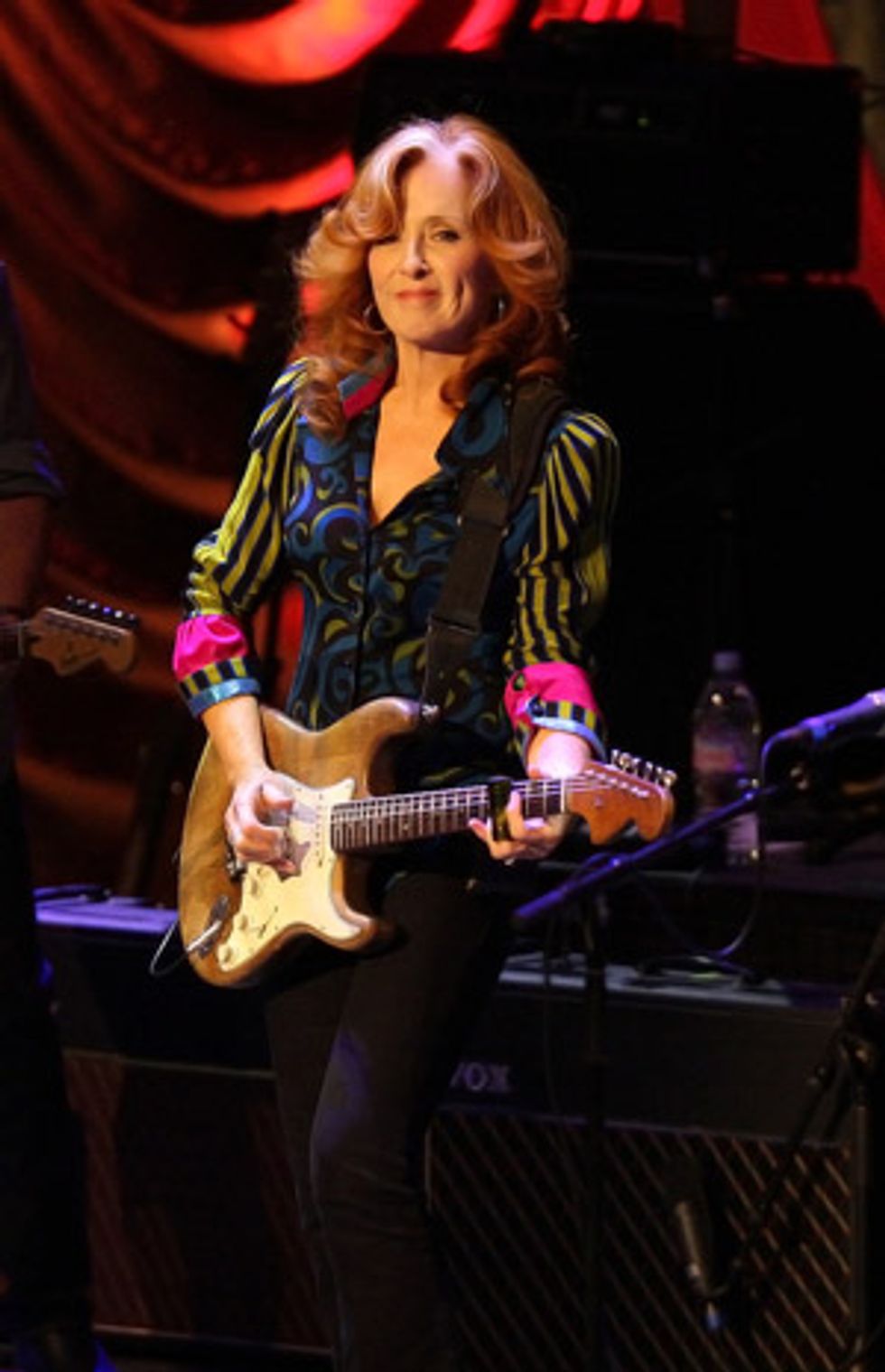
Bonnie Raitt bought her famous “Brownie” Strat for $120 in 1969 and has played it at every gig since. Photo by Buzz Person
While teaching herself to play acoustic guitar as a teenager in the late ’60s, Bonnie Raitt—now world-renowned for her sultry voice and bracing electric slide prowess— dreamt of leaving her native California and joining the Greenwich Village beatnik scene. As soon as she was old enough, she left her parents—Broadway star John Raitt and pianist Marjorie Haydock—behind to head east and plant her musical roots in the burgeoning folk activist movement.
From there, Raitt tapped into a wide array of influences, with a big turning point coming when she befriended influential blues promoter Dick Waterman while she was in college. Waterman gave her the opportunity to share stages with blues gods like Howlin’ Wolf and Mississippi Fred McDowell, which no doubt left an indelible impression on the blossoming slide player.
Despite such beginnings, Raitt’s road to superstardom was anything but easy. While a 1970 gig with McDowell led to a record deal with Warner Bros., she experienced only moderate commercial success with the label. Her first hit didn’t come until 1977’s “Runaway,” and she was eventually dropped in 1983. She struggled with addiction until Stevie Ray Vaughan’s own recovery in the mid-’80s prompted her to get clean. Not long afterward, Raitt released the album that changed everything. Released in1989, Nick of Time won her three of her nine Grammys to date and set her on a path toward her 2000 induction into the Rock and Roll Hall of Fame. In the process, Raitt went on to become the first woman to have a signature Fender—an offer she originally turned down because she was uneasy about putting her name on a product. (Ever the activist, Raitt used the profits to create the Bonnie Raitt Guitar Project, providing guitars to underprivileged kids in more than 200 Boys & Girls Clubs of America.)
Slipstream, out this month on Raitt’s new Redwing Records label, is her first album in seven years—although she’s been far from dormant in the interim. Much of that time was spent on the road, including on a stint with Taj Mahal before her brother was diagnosed with a second brain tumor. She took care of him until his passing, and soon afterward one of her good friends passed away, prompting Raitt to take time off for the first time in more than a decade.
The incessant road warrior’s hiatus lasted only a year before things started pulling her back toward her creative muse. She ended up in the studio much sooner than originally planned after meeting with producer Joe Henry to see if their styles blended. What was originally supposed to be a couple-song jam turned into an entire album. “Halfway through the first song,” Raitt recalls, “we knew we had something very magical.”
Raitt says she can’t put into words exactly how she knows when a song is right, but she recently told Premier Guitar her approach always seems to have a way of illuminating her life. She also shared why the guitar is her vehicle of choice, how newer artists like Bon Iver inspire her as much as Muddy Waters and John Lee Hooker, and what her advice is for guitarists trying to find their voice.
You picked up your first guitar—a Stella
acoustic—at age 8. What made you stick
with it?
I grew up in a very musical household, with
my mom playing piano all the time for my
dad’s rehearsals. So there was a role model
for me, with my dad singing these great
Broadway scores. Him being a Broadway
star was a great gift for us to be able to see
what that world was like. And the message
of playing music and getting paid for it—
doing something that you not only love,
but that doesn’t even seem like work—was
not lost on me. I must’ve tucked it away
and then remembered it when the opportunity
came years and years later to play
music for a gig.
You’ve said before that electric guitar
burns inside of you. What still turns you
on about the instrument?
It really sounds like a human voice. The
electric guitar will sustain a note, especially
a single note, much longer than an acoustic
will. And then when you play slide—which
is so much like a human voice—you can
work the amplifier and the overdrive. Now
I use a compressor when I play slide, and
with that you can sustain a note as long
as your emotions will hold. It’s like surfing—
you can ride that wave of emotional
intensity and taper it off and build it
up, depending on how you work your
volume knob. It’s really an exciting way
to express yourself. So electric guitar, for
me, has the raunch and the beauty that
more openly reflects the range of emotions
I want to get when I’m singing and
playing. It’s much more expressive to me.
And that’s what keeps me going back.
The solos on your new rendition
of the Dylan tune “Standing in the
Doorway” have that same lyrical quality—
they sound like someone crying.
Yeah, and then to have pedal steel behind
me. I rarely get to do that. Greg Leisz is
one of my heroes, and to be playing with
Bill Frisell and those guys was such an
honor. One of the great things about slide
guitar is that I found I could go to Cuba
and play with musicians there, and then I
went to Mali, Africa, where the blues was
born, and within a day I was playing with
those musicians—because it doesn’t matter
whether you know all the chords if you
know your way around with a slide. It’s
such a monophonic instrument: You can
sit in with the Chieftains on slide as well
as you can Cuban and African music.
When your own lungs literally run out of
air, you can take the slide guitar and add
that other voice.
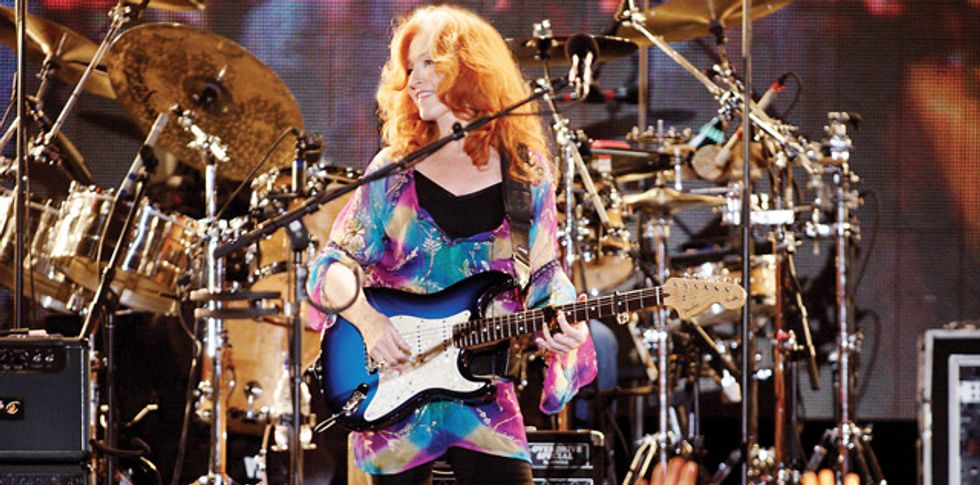
You cut three tracks with Frisell.
Did you have him in mind originally
or was that something you and Joe
Henry [who produced four Slipstream
songs] decided together?
Joe first suggested we work with Bill.
When we were getting to know each
other on the phone, we were talking
about mutual friends and people we love,
and I was complimenting him on his
Scar record. I love Bill’s playing on that,
so he said maybe we should get Bill in
on the sessions.
Slipstream is your first release in seven
years, and around 2009 you decided
to take some time off. What was that
like for you after working for so many
years straight?
We did a two-year tour after [2005’s]
Souls Alike, and then a year before the Taj
Mahal tour my brother was diagnosed
with a second brain tumor and I took a
break to care for him. I hadn’t really had
a break since my parents passed away. In
10 years, I had been on the road or recording
pretty nonstop or going through my
brother’s terrible illness and passing, so I
needed to take a break and step back. In the
past, “taking a break” really meant writing
songs and looking for new material. But I
had been doing that basically since 1970
without a real break. Sometimes you need
to clear the deck and let the field go fallow
and not think every time you’re playing a
song, “Is this something I want to record?”
Sometimes you just have to live.
Yeah! I got to listen to other kinds of music.
I went to a lot of shows and didn’t sit in—
didn’t even tell [the performers] I was there. I
love doing yoga, and I love hiking and biking.
For somebody who’s on the road all the time,
just being home is really the vacation you
want to have. So I got to balance some of the
other aspects of my life and be with my family
and friends and really enjoy some time at
home, watching what fours seasons look like
changing in a row from the same place.
How did you know you were ready to go
back into the studio?
After a year at home, little sprouts poked their
head up. I was listening to songs when I called
Joe about working together. This was months
earlier than I was expecting to go back in the
studio, but those sessions were so exciting that
it really jumpstarted the record for me.
So you got the itch?
At a certain point, you just want to go back
and do the other thing—you don’t want to
do anything too much. I don’t know if you
have members of your family or have known
people whose mom or dad retire or got laid
off after many years of going to the job, and
they don’t know what to do with themselves.
It’s not the music part I was tired of—it’s the
promotion, clothes, sets, tours, interviews,
marketing, and monitoring the distribution.
All the business of being in this business is
what gets wearing, not the music. But without
all that, you can’t go on tour.
How did you go about determining
which songs to put on this album?
It’s pretty much the same as it’s been since
my first album: I listen to a lot of different
song ideas that I’ve written, and the ones I
like I put in this pile. Ninety-nine percent
of the stuff I listen to isn’t right, but I know
when I have to do a song. I’ve already said a
lot of stuff in previous records, and you don’t
want to repeat yourself musically or lyrically.
I don’t plot it—I don’t conceptualize it—I
just let the music speak to me, and when I
have a enough songs that I think are going
to go well together, then I go into the studio.
What makes a song one you have to do?
It’s hard to put into words. It just has to
speak to me personally. I mean, I’m probably
not going to cut polkas or disco or speed
metal [laughs], but other than that I don’t
have any limitations on the kind of music it
can be. I mean I like listening to that stuff,
but it doesn’t mean I’m going to do it. There
are definitely veins of styles that I stay in. I
just let that mysterious process wash over me
than rather than try to analyze it.
What are your favorite slide tunings?
I play in open A [E–A–E–A–C#–E, low
to high], or I go down to G [D–G–D–G–
B–D, low to high], which is the same but
everything is one whole note lower. The reason
I use so many guitars onstage is because
songs are in different keys—open D, open E,
open E%—and it saves time between songs.
Sometimes I use capos, too—if I’m singing
in C, I’ll put the capo on the third fret.
Which guitars are you going to tour with
this time around?
I’ve got a really great collection. My brown
Strat—the body is a ’65 and the neck is
from some time after that. It’s kind of a
hybrid that I got for $120 at 3 o’ clock in
the morning in 1969. It’s the one without
the paint, and I’ve used that for every gig
since 1969. I also have two or three of
my signature Fenders. Those guitars are a
metallic blue to indigo, and they have Texas
Specials pickups—which are really great—
and jumbo frets like my other Strats. Then
I have a ’63 sunburst Strat that used to be
owned by Robin Trower. I have Seymour
Duncan pickups in that.
You also use a Gibson, right?
Yes, I have an old Gibson ES-175 cutaway. I
went to the cutaway because I use a capo on
the third and fifth frets, and I can’t get the
octave unless I have a cutaway. That’s part of
the reason I went to electric, as well. Partly
for sustain and partly to be able to get the
octave when I have a capo on.
What do you like, sonically, about bottleneck
slides over other slide types?
I didn’t know any different! I literally
soaked the label off a Coricidin bottle
until I got to college and saw people playing
other types. I’ve never used anything
but glass. Jim Dunlop makes them for
me. My fingerpicks have to be custom
made, too, because they stopped making
small plastic fingerpicks years ago—they
only make metal fingerpicks now. Metal
fingerpicks are for the banjo and it’s a different
sound. I’m sure people use them
on guitar, but plastic sounds better for
what I do.
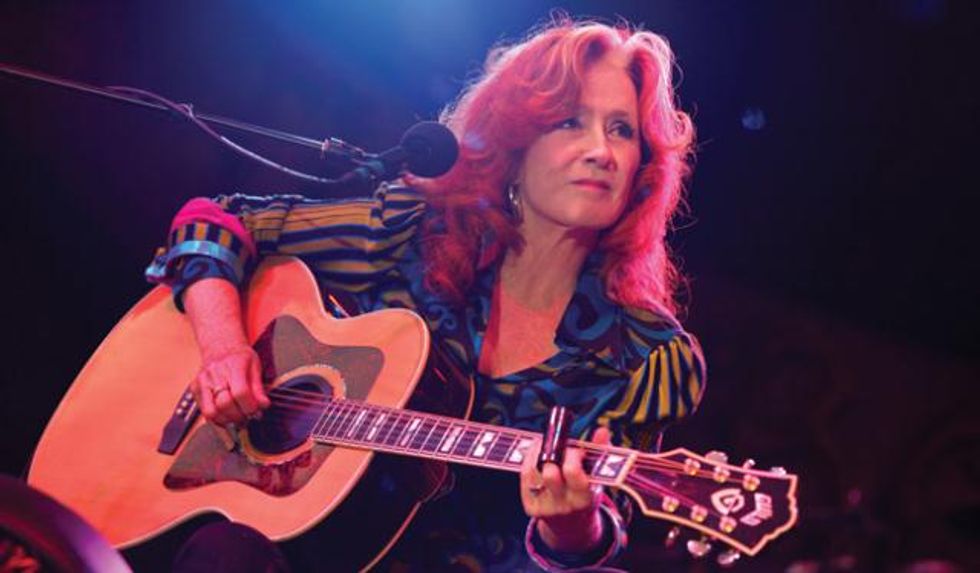
You’ve been an inspiration to younger
generations of singer/songwriters, from
the Dixie Chicks to Adele and Bon
Iver, whom you recently saw live, right?
Yes, I went to meet Justin [Vernon, Bon
Iver frontman] finally after talking to him
on the phone. His show was incredible.
Go on YouTube and type in “Bon Iver live
show 2011” and check it out. He blew
me away on record, and I didn’t think he
could duplicate it live, but he did it.
What else is inspiring you these days?
One of the most amazing talents is Sarah
Siskind. Then there’s my friend Maia
Sharp, who was an opening act on my last
tour. She sings on Slipstream, and I cut
three of her songs on Souls Alike. Also, my
friend Marc Cohn. Jackson Browne and
Bruce Hornsby are like brothers to me. I
love Bruce’s latest double-live album, Bride
of the Noisemakers. If I had to be on a desert
island and could only have one artist’s
music, it would be Bruce Hornsby. Mavis
Staples is one of my heroes, too, so she and
I are going to do a lot of shows together.
Are there any players you haven’t
played with yet that you’d like to?
Justin Vernon from Bon Iver. I’d love to
play with the Stones and Keith. I opened
for them on my last tour and sang “Shine
a Light” with them, and I’m on their
DVD. I’d love to do more recording with
Bill Frisell. I love classic jazz. There are
two jazz singers—Lizz Wright and Melody
Gardot—who are doing incredible work.
I would love to make an old 1920s bluesjazz
record—not like an old Chicago jazz
band, but just really, really beautiful piano
jazz. So, one day …[laughs].
On that note, what were you dreaming
for the future during your hiatus?
What are you looking forward to down
the line?
The whole Occupy movement has given me
some hope that, across party lines, newer
generations will rise up and ask for accountability
and transparency and reform some of
these laws. That is my first dream—to see
people become more awake and compassionate.
My dream is to be a service in that
struggle and to not get discouraged. One
of the great things about playing live—besides
being fun—is that we can buoy the troops, in
terms of raising money and awareness for these
issues. I want to enlist more artists to be politically
active to make a difference. It’s that marriage
of music and being of service. My heroes
are of the “The Times They Are a-Changin’”
period—like Bob Dylan.
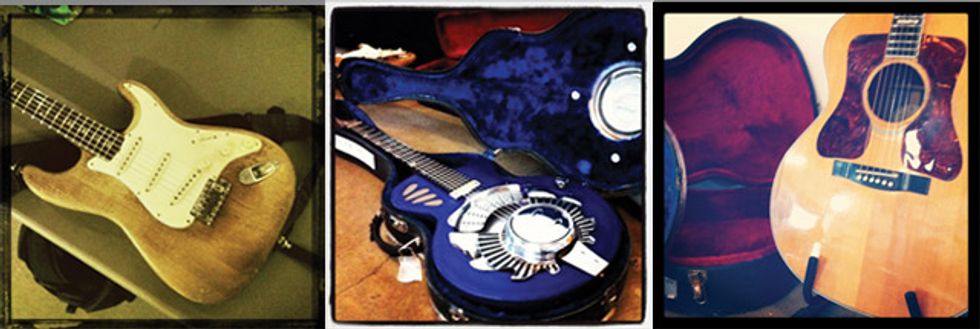
Bonnie Raitt's Gear
Guitars
“Brownie” Strat with 1965 body (tuned to open
A), three Fender Bonnie Raitt signature Strat
prototypes (one in open G, one in open A%, and
one in standard), Gibson ES-175 with a P-90,
three Guild acoustics (one with higher action for
slide work, another in open C), purple Pogreba
Guitars resonator
Amps
Bad Cat Black Cat 30R 1x12 combo (Raitt uses
only the EF86-driven channel 2)
Effects
Boss CS-2 Compression Sustainer, Pro Co Rat
String, Picks, and Accessories
GHS Boomers custom electric sets (.013, .017,
.020w, .032, .042, .052), GHS Phosphor-Bronze
acoustic sets (.012, .016, .020, .036, .046, .056),
custom Jim Dunlop molded-plastic fingerpicks,
Dunlop bottleneck slides
It’s really come full circle for me to be able to record his tunes again, even if they’re not overtly political. Anytime we talk about human beings and the way they treat each other—it can be a man and a woman, or a father and son, or two countries—there has to be the same respect. You have to listen—it’s the same core issue. You’ve got to find that light in the other person and appeal to it. That’s one of the things that music is really great for.
You were an apprentice to some of the
greatest musicians of all time, and now
you’re in the same category as those you
looked up to. What advice do you have for
players trying to find their voice?
I think it’s really great to get good at your instrument
and your craft. There’s no substitute for that—even
the most talented and lucky person still has to put the
time in. Get to the point where you can hear yourself
on tape and go, “That’s pretty good!” If your heart
and soul are in it and you’re doing it for the right
reasons, nothing can hold you back. Take opportunities
to get your music out there and heard, even if
it’s a small group of people at first. Find satisfaction
in pleasing yourself first, and then those you respect.
Whether you’ll make it in this crazy business, I don’t
know—that’s to be seen. But if you believe in it, keep
working at it. Post it on YouTube. It seems obvious,
but those opportunities weren’t around when I started
out. I’ve got a very talented nephew who’s writing
music, and he’s been doing it with his laptop. Pro
Tools has made things so incredible! You can get good
in a short period of time if you at least put time into
it—and a lot of heart.
Youtube It
Get a glimpse of Raitt’s mesmerizing, blues-infused picking power
in these videos ranging from 1976 to 2005.
John Lee Hooker and his protégé work up such a sweat that Raitt says, “Somebody
better get this man a towel” during this performance for Hooker’s John Lee Hooker &
Friends 1984-92 DVD.
A young, charismatic Raitt wields the double-threat of a velvety voice and a thicksounding
ES-175 with uncanny soulfulness.
Raitt calls fellow blues crusader Keb’ Mo’ “funky as hell” as they trade flirty, smokin’
licks at the Trump Taj Mahal Casino in Atlantic City, New Jersey, in 2005.

